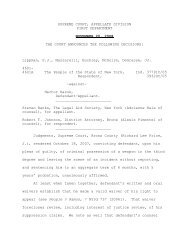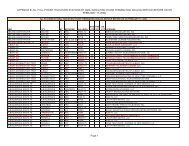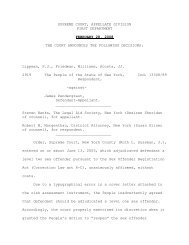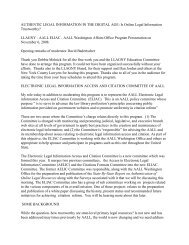april 15, 2008 - Criminal Law Library Blog
april 15, 2008 - Criminal Law Library Blog
april 15, 2008 - Criminal Law Library Blog
You also want an ePaper? Increase the reach of your titles
YUMPU automatically turns print PDFs into web optimized ePapers that Google loves.
to a single policy deductible (see International Flavors &<br />
Fragrances, Inc. v Royal Ins. Co. of Am., 46 AD3d 224 [2007]).<br />
Had they intended to aggregate all claims resulting from the<br />
manufacture of plaintiff’s product, “it would have been a simple<br />
matter to rewrite the definition of ‘occurrence’” (id. at 229).<br />
In the absence of a specific aggregation-of-claims provision<br />
precisely identifying the operative incident or occasion giving<br />
rise to liability, the court must apply the “unfortunate events”<br />
test (see Arthur A. Johnson Corp. v Indemnity Ins. Co. of N. Am.,<br />
7 NY2d 222 [1959]) to determine whether the underlying multiple<br />
claims constitute multiple “occurrences” under the policy (see<br />
Appalachian Ins. Co. v General Elec. Co., 8 NY3d 162, 173 [2007];<br />
International Flavors, 46 AD3d at 228). Under this test, the<br />
manufacture and sale of plaintiff’s two defective products did<br />
not constitute a single occurrence. Each installation of<br />
ExxonMobil’s polybutylene resin into a municipal utility water<br />
system, and each introduction of AV-1 lubricant into an aircraft<br />
engine, created “exposure” to a condition that resulted in<br />
property damage, to multiple claimants on different dates over<br />
many years. Under the circumstances, the underlying product<br />
32
















